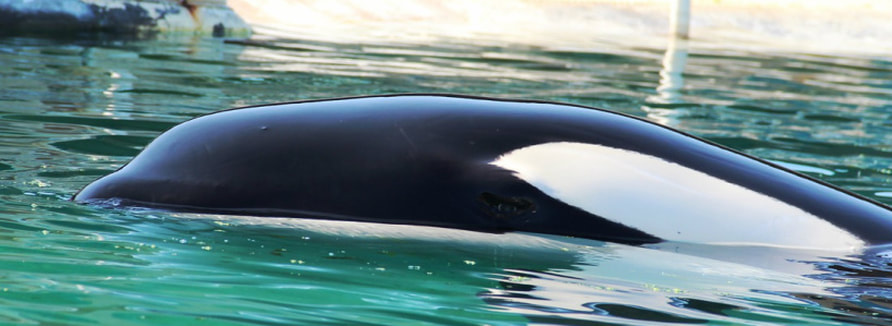Orcas have been captured from the wild for display in captive facilities since the 1960's. The first orca to be captured in 1961 was found off the coast of California and given the name Wanda. Many of the known individuals who have died in captivity since are not remembered. We wanted to give you the opportunity to learn about some of The Forgotten Orcas who did not survive the show.
When the first captures occurred, orcas were believed to be mindless predators living up to their name 'killer whale' (in fact, 'killer whale' was an incorrect translation from the name of 'whale killers' given by Spanish fishermen who witnessed the apex ocean predators feeding on large whales). As people began to watch and study them in captivity, they soon realised that their perception of the species Orcinus orca had been misguided. Researchers soon learnt that they are highly evolved, social, sentient beings and many came to the conclusion that orcas are not suited to a life in captivity.
Studies on wild orcas began in the early 1970s, providing insight into free-ranging populations. Among many other discoveries, scientists found that orcas share similar lifespans to humans, are self-aware, capable of learning, and that different populations possess unique cultures, dialects and even genetics. The more we learn about free-ranging populations, alongside studying captive orcas, the more it is apparent to many orca biologists, conservationists and members of the public that orcas in captivity have sub-optimal welfare.
Orcas, along with other cetacean (whale, dolphin and porpoise) species, are one of the only mammals kept in captive enclosures that do not resemble their habitat in any way. They are also one of the only animals still performing tricks for human entertainment. In 2012, Orca Aware investigated (in 'Captive orcas: Behind the scenes or behind bars?') whether education and science really justify the keeping of orcas in captivity in the 21st century.
To find out more about the organisations and individuals that are working to end orca captivity, visit Orca Freedom Advocates, where we also recommend resources for you to learn more about the impact of captivity on orca welfare. You can also visit Blackfish Movie to find out about the documentary that has helped turn the tide on how we perceive the captivity industry.
When the first captures occurred, orcas were believed to be mindless predators living up to their name 'killer whale' (in fact, 'killer whale' was an incorrect translation from the name of 'whale killers' given by Spanish fishermen who witnessed the apex ocean predators feeding on large whales). As people began to watch and study them in captivity, they soon realised that their perception of the species Orcinus orca had been misguided. Researchers soon learnt that they are highly evolved, social, sentient beings and many came to the conclusion that orcas are not suited to a life in captivity.
Studies on wild orcas began in the early 1970s, providing insight into free-ranging populations. Among many other discoveries, scientists found that orcas share similar lifespans to humans, are self-aware, capable of learning, and that different populations possess unique cultures, dialects and even genetics. The more we learn about free-ranging populations, alongside studying captive orcas, the more it is apparent to many orca biologists, conservationists and members of the public that orcas in captivity have sub-optimal welfare.
Orcas, along with other cetacean (whale, dolphin and porpoise) species, are one of the only mammals kept in captive enclosures that do not resemble their habitat in any way. They are also one of the only animals still performing tricks for human entertainment. In 2012, Orca Aware investigated (in 'Captive orcas: Behind the scenes or behind bars?') whether education and science really justify the keeping of orcas in captivity in the 21st century.
To find out more about the organisations and individuals that are working to end orca captivity, visit Orca Freedom Advocates, where we also recommend resources for you to learn more about the impact of captivity on orca welfare. You can also visit Blackfish Movie to find out about the documentary that has helped turn the tide on how we perceive the captivity industry.


